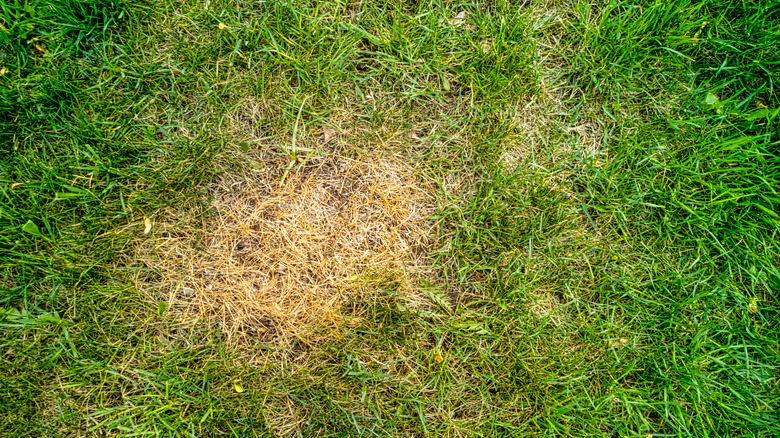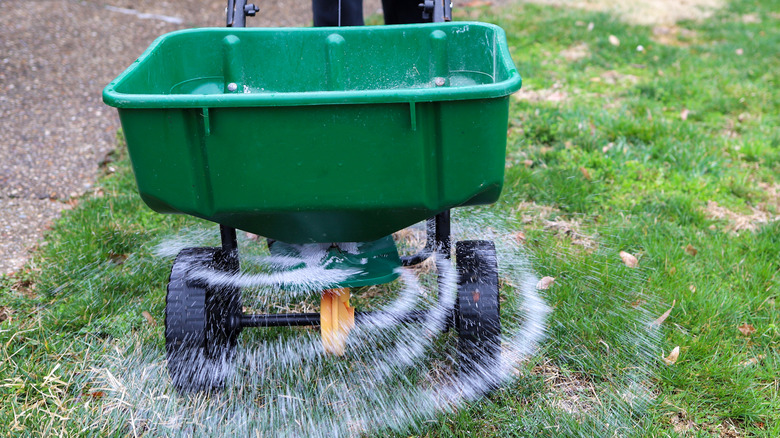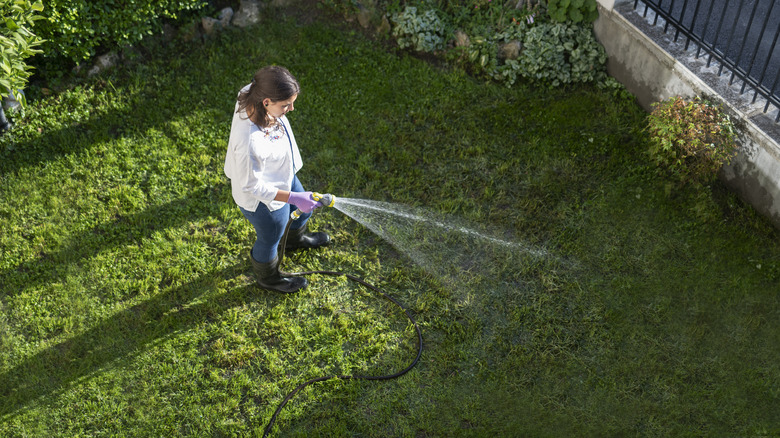How To Prevent Lawn Burn In The Summer
Nothing says summer living like lounging on your back deck admiring a plush, verdant green carpet of grass. Unfortunately, not all homeowners get to experience this level of seasonal satisfaction thanks to lawn burn. Ugly brown patches of scorched grass dotting an otherwise healthy yard are an especially unwelcome sight during the summer months when lawns should be at their prime hosting barefoot revelers at weekend barbeques. Fortunately, preventing lawn burn in the summer is possible by focusing on proper fertilization and watering.
If you notice irregular-shaped brown or yellow blotches peppering your yard, your first thought may be that it's dead grass. However, chances are it's lawn burn. Sounds scary, but simply put, the discolored portions of grass merely indicate that the roots are stressed. This can be caused by excess sun exposure, lack of adequate drainage, or more commonly, too much nitrogen or mineral salts in the soil. The latter can be the result of animal urine or fast-release fertilizers. In fact, the misuse of agriculture-grade or fast-release fertilizers are so often to blame for the appearance of singed patches of grass, lawn burn is often referred to as fertilizer burn.
Proper fertilization is key
Yes, you can over-fertilize your yard. Zealously coating your lawn with fertilizer can lead to nitrogen overload, making it impossible for microbes in the soil to digest properly. This causes the grass to expel water back to the soil, which creates unsightly dried out splotches that mimic burnt tissue. In addition, in some cases, nitrogen that is excessively exposed to direct sunlight can damage or kill microbes altogether which also generates brown blemishes. To determine whether the unattractive patches in your yard are in fact a result of fertilizer burn, consult a calendar. If you notice discolored grass soon after adding fast-release fertilizer to your lawn — or two to three weeks after applying slow-release fertilizer — it's likely fertilizer burn.
To prevent fertilizer overkill, it's important to know what lawn fertilizer numbers mean on the front of the bag. Doing so will allow you to calculate the appropriate amount of fertilizer to apply based on the percentage of nitrogen in the product. For example, if your fertilizer contains 20% nitrogen, one pound of fertilizer is recommended per 1,000 square feet of lawn. Also, consider using a fertilizer spreader with an adjustable setting rather than manually scattering it on your grass to ensure even distribution. In addition, to avoid overlapping, add fertilizer dye to the mix. The coloring acts as a visible marking system and allows you to see the parts of your yard that have already been treated.
Water as a cause and cure of lawn burn
If the toasted stripes or spots on your yard are caused by high levels of nitrogen, get out your garden hose or sprinkler. Aggressively watering areas suffering from lawn burn is the only way to flush out excess fertilizer or pet urine. Once you've successfully removed the chemical from the soil, brown grass will turn green again; however, this may take a while depending upon the severity of the burn. For extreme lawn burn, plan on adding up to an inch of water per day to kick-start the healing process. Enough water is needed to sink deep into the ground and completely saturate the roots, most of which sit five to six inches underground. Likewise, if your lawn is covered with charred spots due to an extended period of hot, dry weather, watering is key to resuscitation. Aim to water parched patches early in the morning as opposed to midday when the heat of the sun will simply evaporate any moisture.
Still, there is a paradox to watering grass. Too much moisture can cause roots to rot, and over time, may lead to lawn burn. Grass needs to breathe correctly in order to thrive. If it is robbed of this essential function due to excessively wet conditions, grass will die and you will find brown patches in its wake. To prevent lawn burn from marring your outdoor oasis, be sure to water your lawn evenly and consistently.


